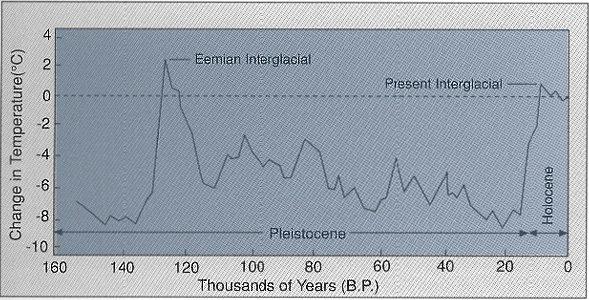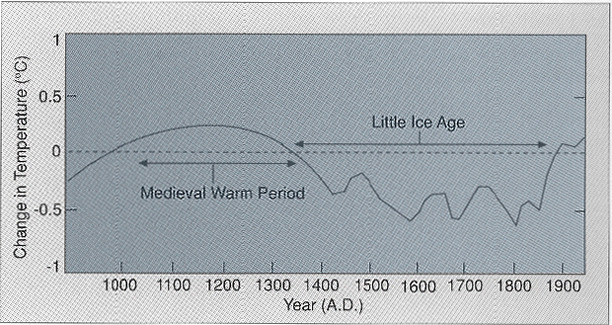12,900-11,500 Y.A. = The Younger Dryas
The Younger Dryas were known as the return to cold conditions from 12,900-11,500 years ago. Paleoclimatic data shows this through pollen data that indicate that forests which had recently developed in Europe during the aborted warming following the ice ages were suddenly replaced again by artic shrubs, herbs and grasses, and Greenland ice cores indicate a local cooling of about 6 degrees C during this event.
10,000 Y.A.= Holocene
Following the Younger Dryas is the present warm epoch, known geologically as the Holocene Interglacial.

The Holocene started suddenly around 11,500 years ago. Greenland ice cores recorded a striking sudden cooling event about 8,200 years ago. This cooling event gave cool, dry conditions that lasted about 200 years, before there was a rapid return to conditions warmer and moister than today. In addition, this cooling shows up in records from North Africa across southern Asia as a phase of arid conditions due to failure of summer monsoon rains. Furthermore, the cold and aridity also looks like it hit northernmost South America, Eastern North America, and parts of North Western Europe.
1250-1850 AD= The Little Ice Ages
Following the Holocene there was a "Medieval Warm Period" which was followed by a longer span of considerably colder climates, often termed the "Little Ice Age" which was when the global mean temperature may have been 0.5 +/-1.0 degrees C colder than today.

Paleoclimatic evidence shows that Alpine glaciers moved into lower elevations, rivers that rarely freeze today were often completely ice-covered in the winter time, and precipitation patterns also changed in many regions.
Excerpt from: http://www.atmos.washington.edu/1998Q4/211/project2/moana.htm
RETURN to ORIGINATING DOCUMENT
Online since 1998
Introduction for First Visit
Frequently Asked Questions
Home Page English Español Portugues
Search Page Index of Documents
Disclaimer About Us Contact
Back Up Home Page (Mirror Site)
Home Page English Español Portugues
Search Page Index of Documents
Disclaimer About Us Contact
Back Up Home Page (Mirror Site)